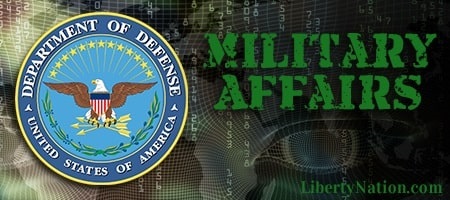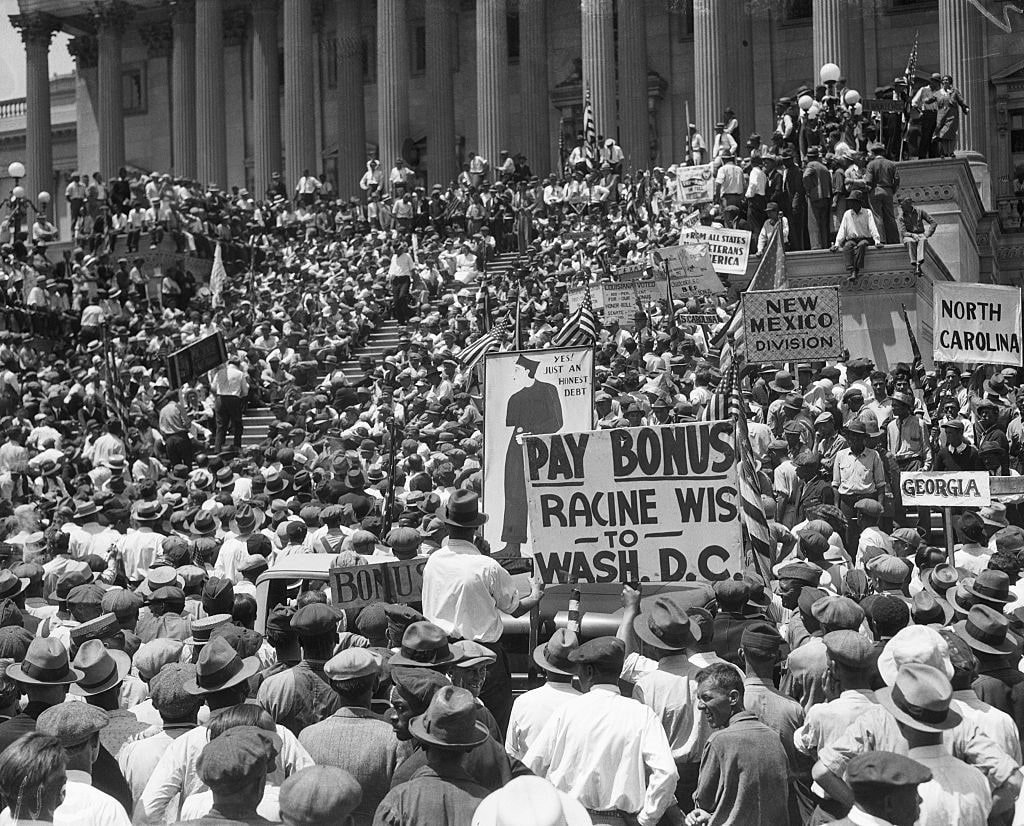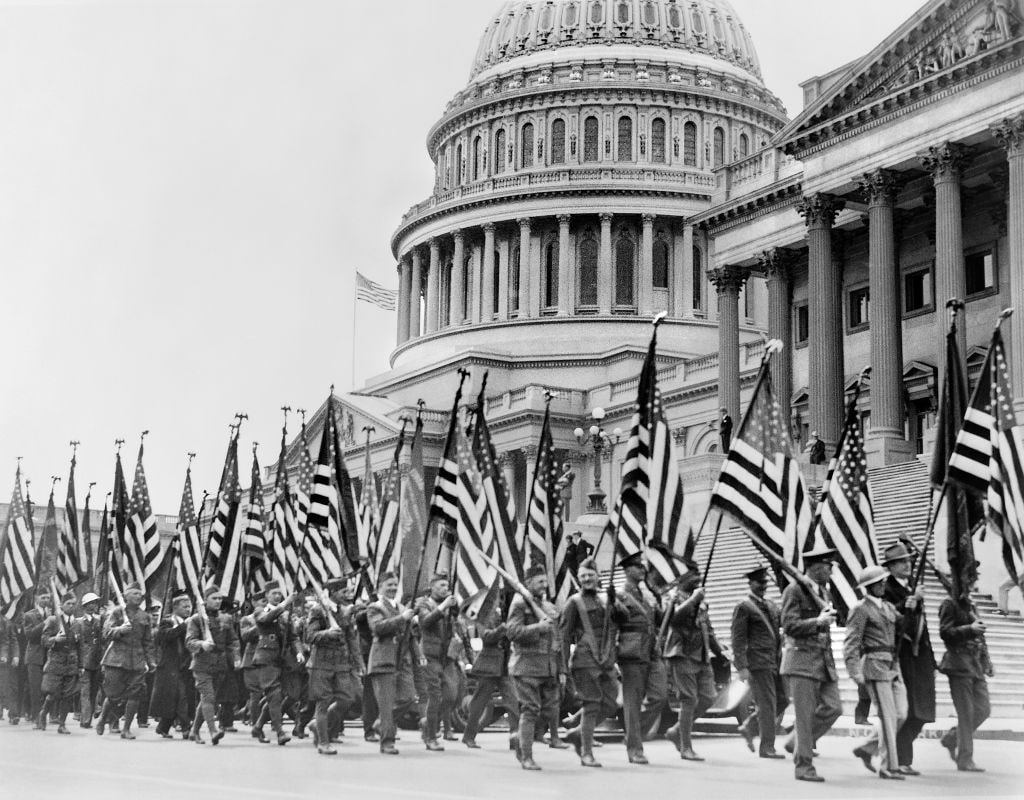When a small percentage of US military veterans sparsely sprinkled throughout an annoyed January 6, 2021, crowd of protesters moved toward the US Capitol, they were summarily scooped up with others and arrested. This wasn’t the first time American vets have been the target of the full weight of the US government. Ninety-one years ago, World War I soldiers denied a promised bonus made their grievances known, and felt the heavy hand of authority.
Veterans Not Always Honored in America
When Veterans Day, or Armistice Day as it was called originally, rolls around each year, Americans honor the nation’s heroes and all who served. There was a time, however, when servicemen who fought in the “war to end all wars” were not revered. In 1932, Depression-era unemployment was peaking, hitting veterans – especially those who crossed the Atlantic in World War I and lost wages during the conflict — particularly hard. In 1924, to compensate for the reduced income, Congress authorized a compensatory bonus. “But the payment was to be deferred until 1945 (26 years after World War I ended),” recounted Wyatt Kingseed, writing for Historynet.com.

Particularly irritating for the veterans was that, despite being issued paper certificates obligating the government to pay $1.25 for each day spent overseas and $1.00 a day for stateside duty, no payments had been made. Hundreds of dollars promised in 1945 didn’t do them any good in 1931.
What brought the issue to a head was the Great Depression, when 25% of Americans were out of work. According to USHistory.org:
“By 1932, many of these former servicemen had lost their jobs and fortunes in the early days of the Depression. They asked Congress to redeem their Bonus certificates early. Led by Walter Waters of Oregon, the so-called Bonus Expeditionary Force set out for the nation’s capital. Hitching rides, hopping trains, and hiking finally brought the Bonus Army, now 15,000 strong, into the capital in June 1932.”

(Credit: Getty Images)
Other estimates of the size of the group gathering in Washington, DC, approached 20,000; some historical accounts put the count closer to 45,000, with many of the Bonus Marchers bringing families. As the numbers grew, the protesters who had at first set up camp in empty condemned buildings along Pennsylvania Avenue adjacent to the Mall between the White House and the Capitol moved to the flood plains area of the Anacostia River, a tributary of the Potomac River, east of the Capitol.
Bonus Marchers Lived in Hovels
In July 1932, Bonus Marchers’ accommodations were camps of ramshackle tarpaper and wooden slat hovels and tents. By all accounts, “The veterans never resorted to violence, but they could not avoid tragedy,” a National Park Service publication explained. That tragedy came in the form of an assault by the US Army, moving in to clear them from the camps. The National Park Service’s historical record “The Forgotten March” recounted:
“On July 28, 1932, Gen. Douglas MacArthur stood on the Ellipse south of the White House in his uniform and stiff leather boots. As more than 200 cavalrymen, about 400 infantrymen and five tanks assembled nearby, he told Washington’s police chief that he would ‘break the back’ of the enemy. MacArthur climbed inside a staff car, Maj. Dwight D. Eisenhower took his place in another, and Maj. George S. Patton Jr. looked on from the height of his saddle.”
The enemy? Looking back on this episode in US history, it’s difficult to conceive that a military luminary like MacArthur could view fellow countrymen and brothers in arms this way. During the devastating financial downturn, many radical political organizations formed, some threatening. Then-President Herbert Hoover believed “political agitators, anarchists, and communists dominated the mob,” the National Park Service explained. No doubt those fringe groups capitalized on the turmoil to push their radical agendas, fomenting isolated instances of violence.
Yet, “in Washington that day, the military marched on, herding vets and onlookers alike with bayonets … Soldiers torched shanties that vets had built in abandoned buildings,” according to the record. Veterans protesting for pay they’d been promised were routed. Families had to leave what paltry belongings they had and move out of harm’s way. None of the US Army officers participating covered themselves with glory that day.
Though more than nine decades have passed, considering the Biden administration’s harsh reaction to the January 6 crowd at the Capitol, including a small number of veterans marching in protest to express their displeasure over what they viewed as a flawed 2020 presidential election, not much has changed. Then, as now, the US government can overreact. But on the positive side, America’s veterans, in general, are better treated and have more successful advocacy in government than ever before in history. Americans seem to have a greater appreciation for the sacrifices veterans have made to keep the country free and safe. It is hoped dark days like those in 1932 are in the past, not to be repeated.
The views expressed are those of the author and not of any other affiliation.




